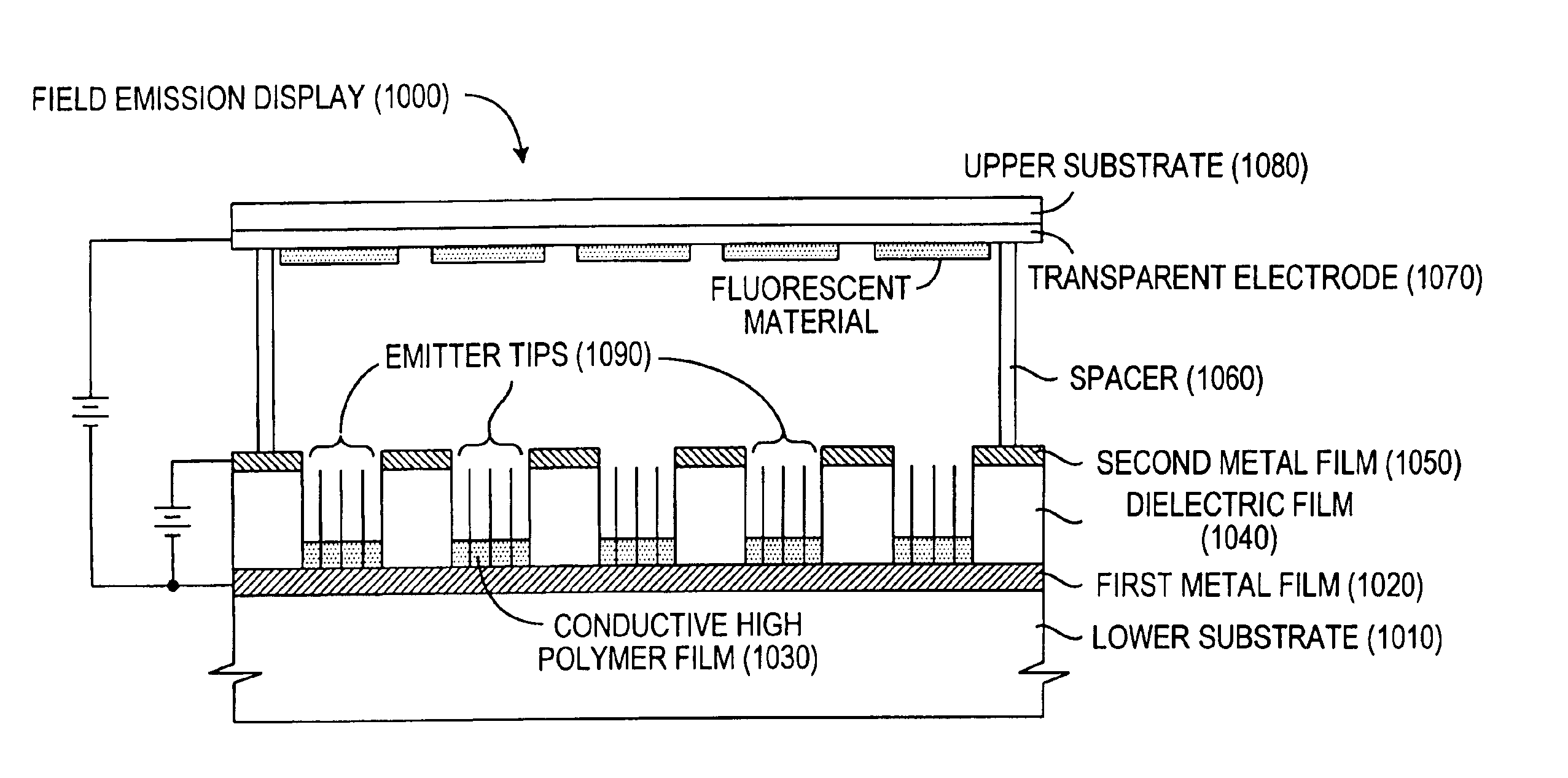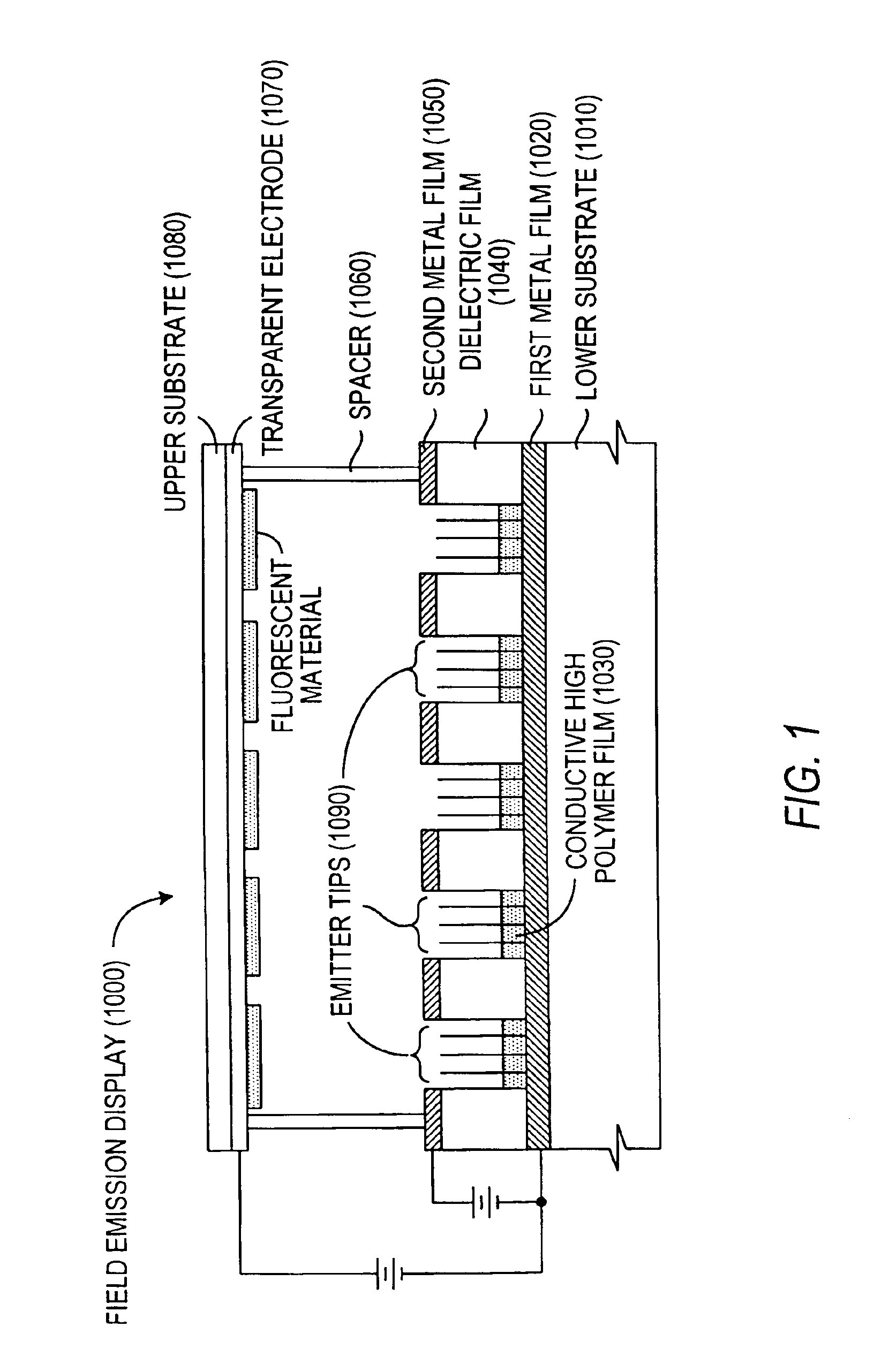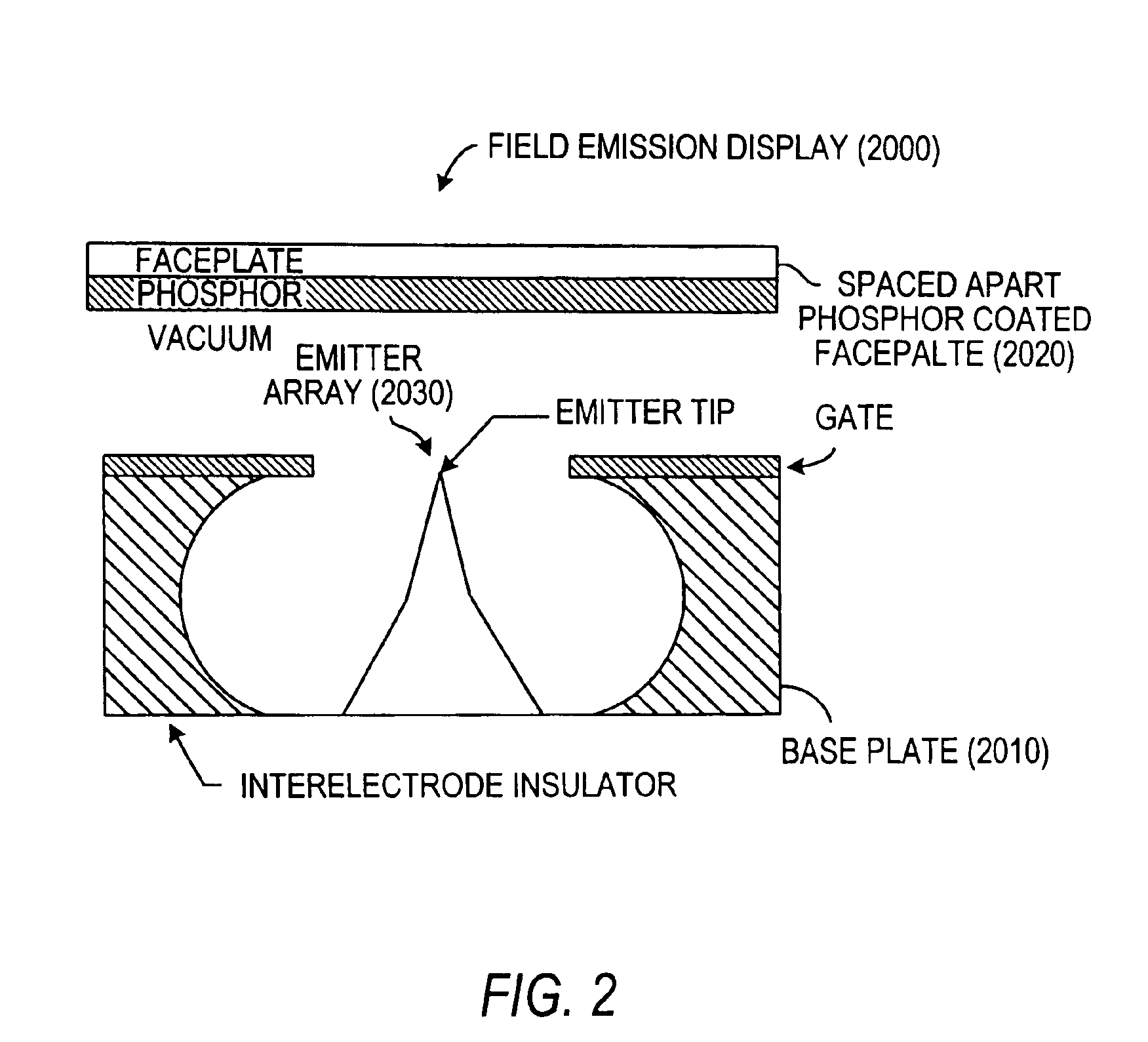Field emission devices using ion bombarded carbon nanotubes
a carbon nanotube and field emission technology, applied in the manufacture of discharge tube main electrodes, electrode systems, electric discharge tubes/lamps, etc., can solve the problem of non-uniform current density between pixels, and achieve the effect of increasing emission, increasing emission sites, and reducing work voltag
- Summary
- Abstract
- Description
- Claims
- Application Information
AI Technical Summary
Benefits of technology
Problems solved by technology
Method used
Image
Examples
example i
Preparation of Nanotube Film on Aluminum Substrate
[0058]With reference to FIG. 5, a solution is formed that contains 150 ml and 0.44 grams of acid washed carbon nanotubes. This solution is placed in an electrophoresis bath 5000.
[0059]An aluminum coated glass 5002 (patterned) serves as one electrode in electrophoresis bath 5000. The pattern forms the pixel size. The smallest feature size can be ca. 1 micron. The aluminum coated glass 5002 is about 55 mm×45 mm×1 mm in its dimensions. The aluminum pattern size is about 9 mm×9 mm. The other electrode, tantalum (Ta) electrode 5004 is also inserted into the electrophoresis bath 5000. A spacer 5006 separates the aluminum coated glass 5002 from the tantalum electrode 5004. A DC voltage for example between 40 through 120 volts, e.g., 100 volts is applied to the electrodes. A current between 1.0 through 5 mA, e.g., 3.8 mA is applied to the electrodes. The duration of the preparation time can be between about 30 to about 90 minutes, e.g., 60 m...
example ii
Emission Characteristics of Ion-Beam-Treated Nanotube Films
[0080]Carbon nanotube films fabricated by electrophoresis on an aluminum layer deposited on a glass have been locally irradiated with focused ion beams. A diode structure with a distance of 125 μm between cathodes and anodes was used for emission measurement. A maximum emission current of 375 microamps with a turn-on voltage of 2.8 V / μm for carbon nanotube emitters was found to decrease by focused ion beam irradiation to 1.1 V / μm with increase in emission current by a factor of six.
[0081]The current range that was used in the test was in the low range with an anode voltage of about 400 to 500 volts, close to the turn-on (threshold) voltage for field emission. The change was from 0.05 to about 0.18 microamps to more than 0.9 microamps with a drastic change in the F-N plot shown in FIG. 9.
[0082]The physical and chemical effects of ion bombardment on carbon nanotubes are not entirely known. While not wishing to be bound to any ...
PUM
| Property | Measurement | Unit |
|---|---|---|
| length | aaaaa | aaaaa |
| length | aaaaa | aaaaa |
| diameter | aaaaa | aaaaa |
Abstract
Description
Claims
Application Information
 Login to View More
Login to View More - R&D
- Intellectual Property
- Life Sciences
- Materials
- Tech Scout
- Unparalleled Data Quality
- Higher Quality Content
- 60% Fewer Hallucinations
Browse by: Latest US Patents, China's latest patents, Technical Efficacy Thesaurus, Application Domain, Technology Topic, Popular Technical Reports.
© 2025 PatSnap. All rights reserved.Legal|Privacy policy|Modern Slavery Act Transparency Statement|Sitemap|About US| Contact US: help@patsnap.com



